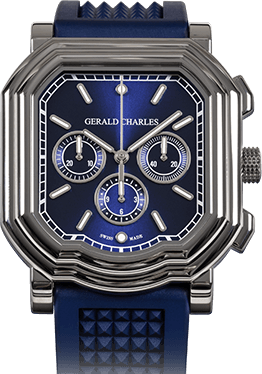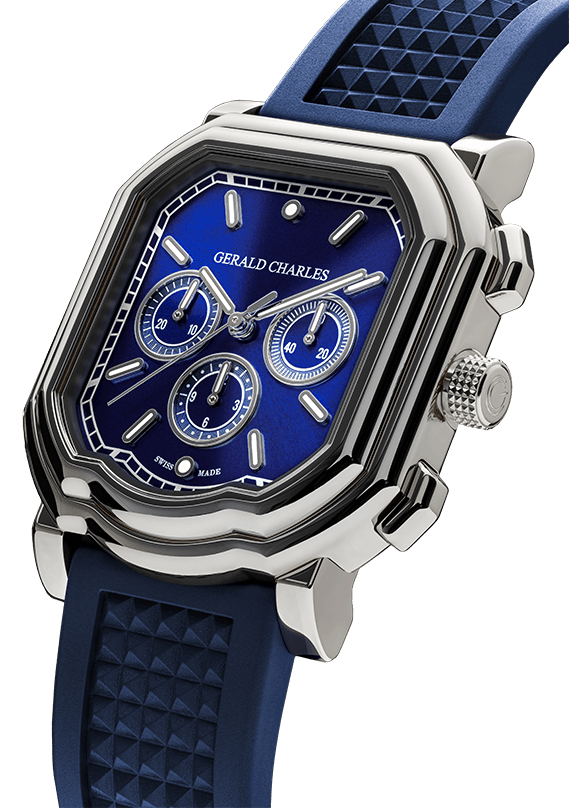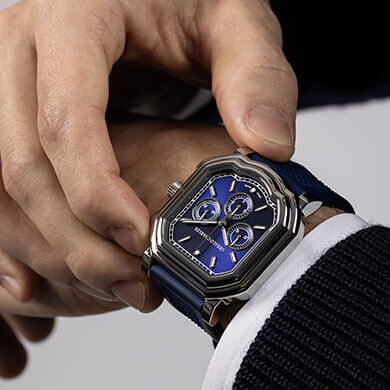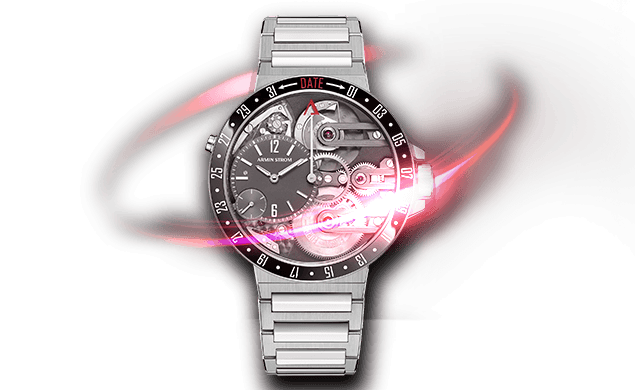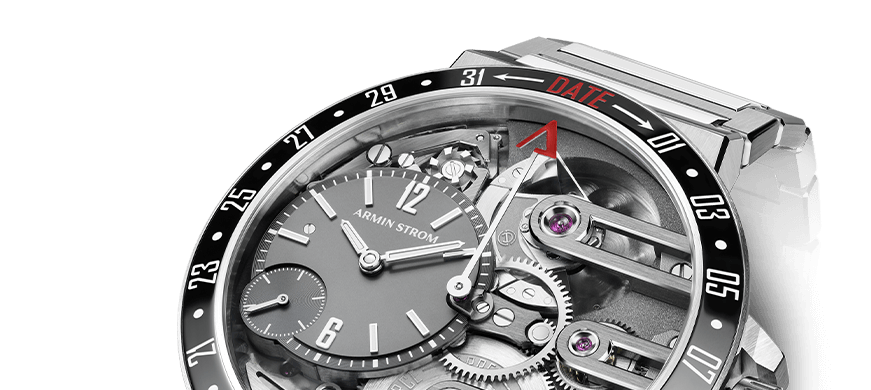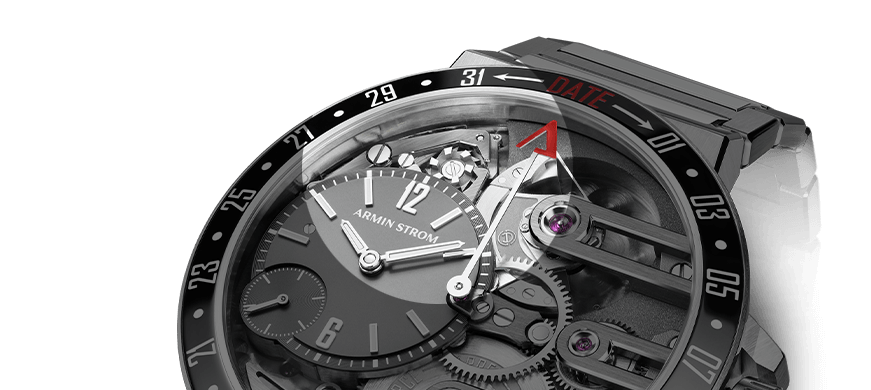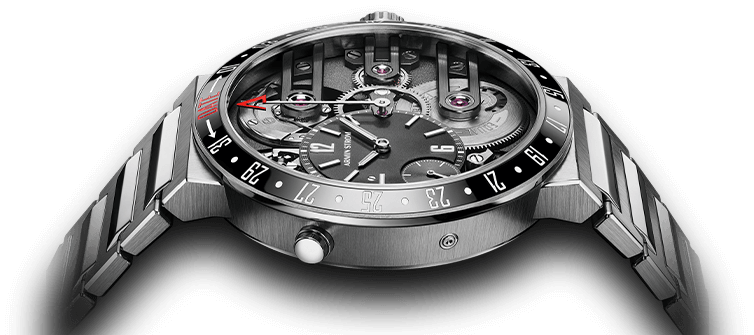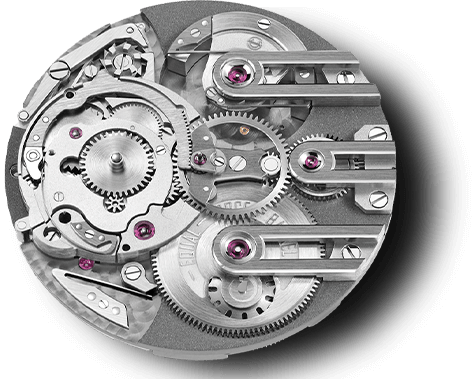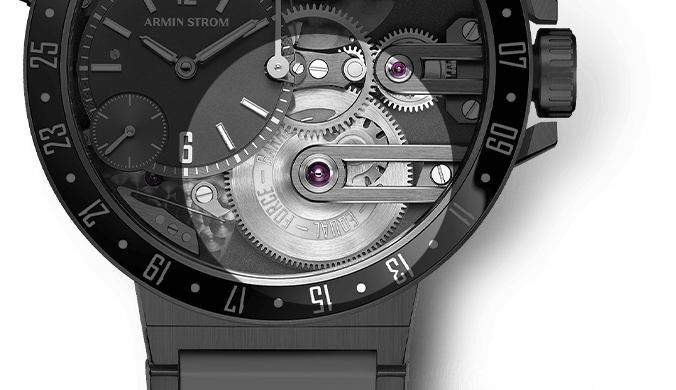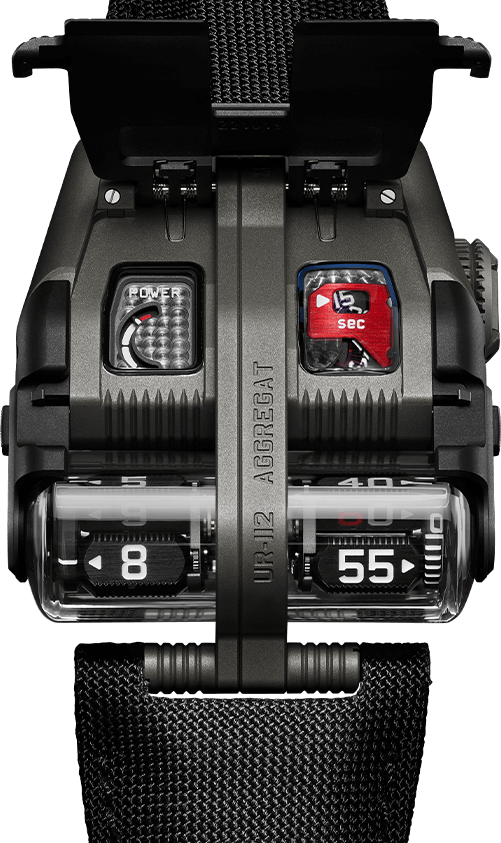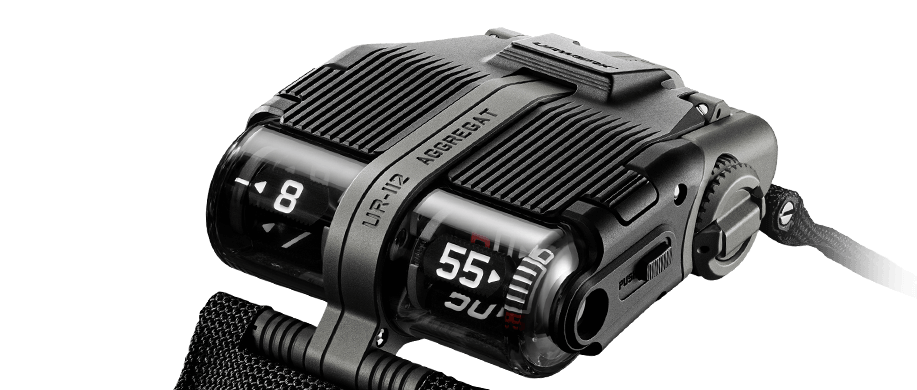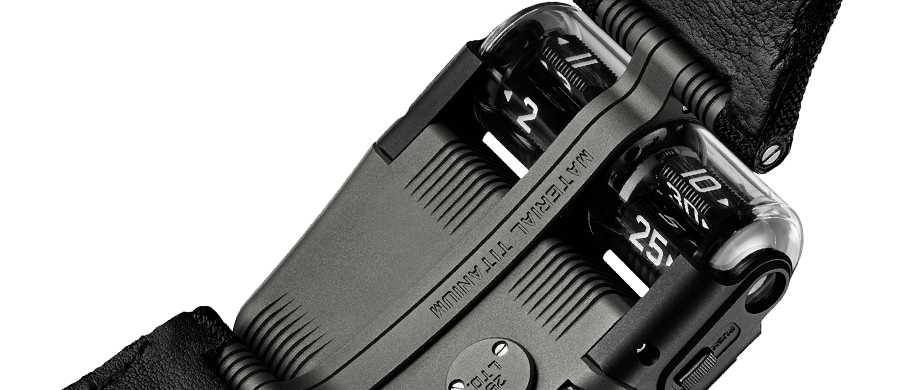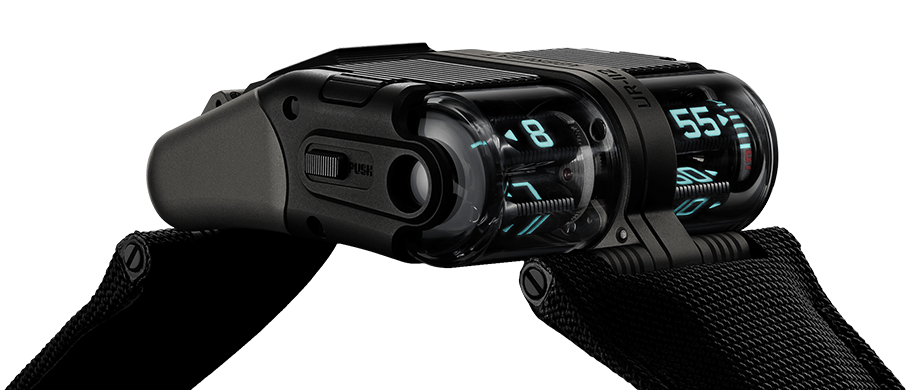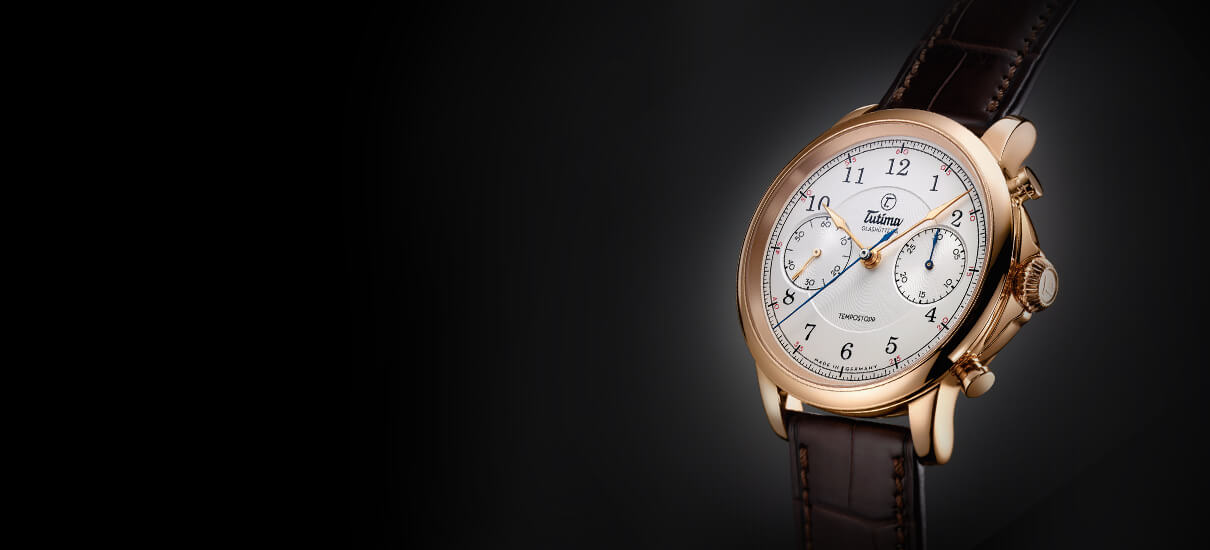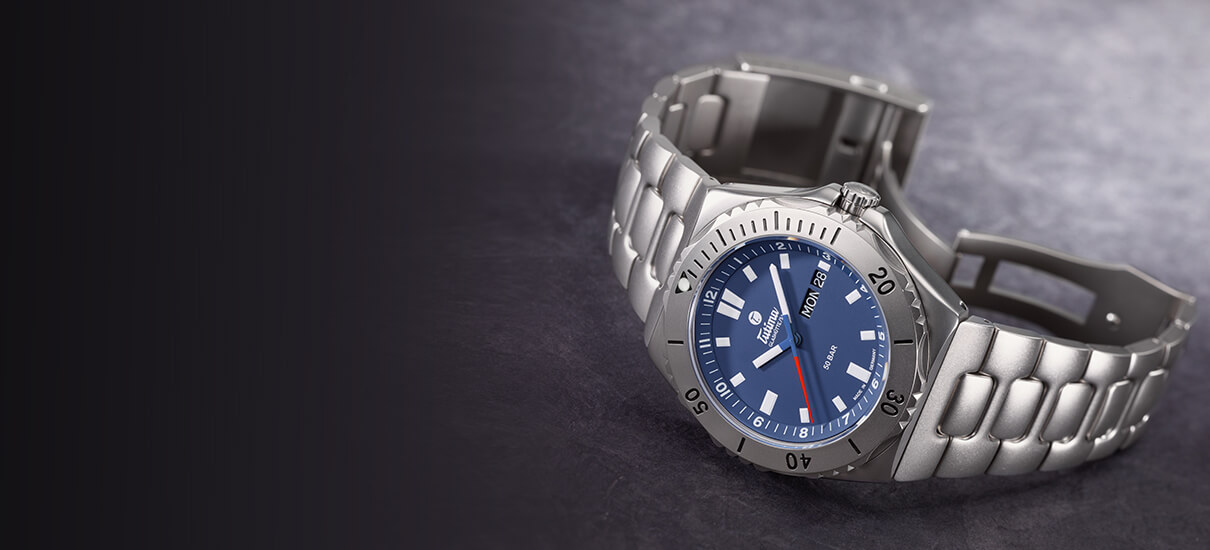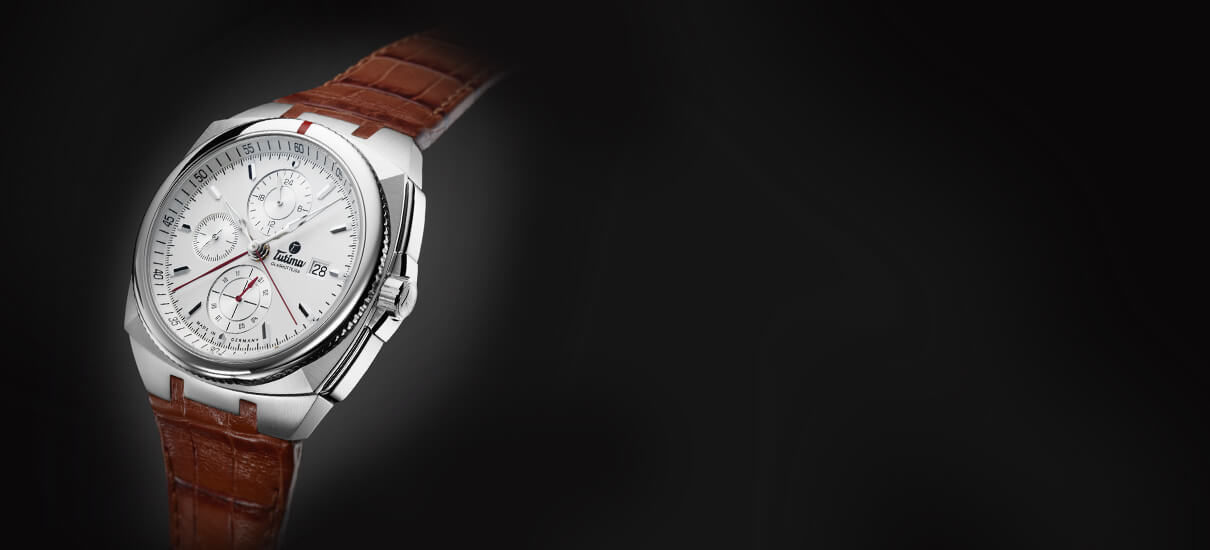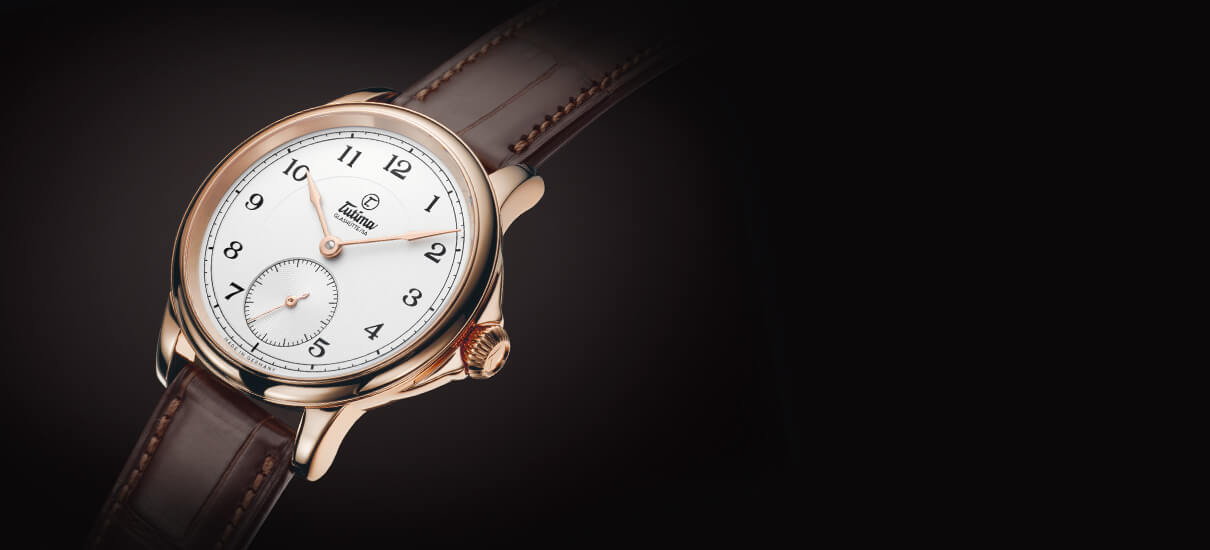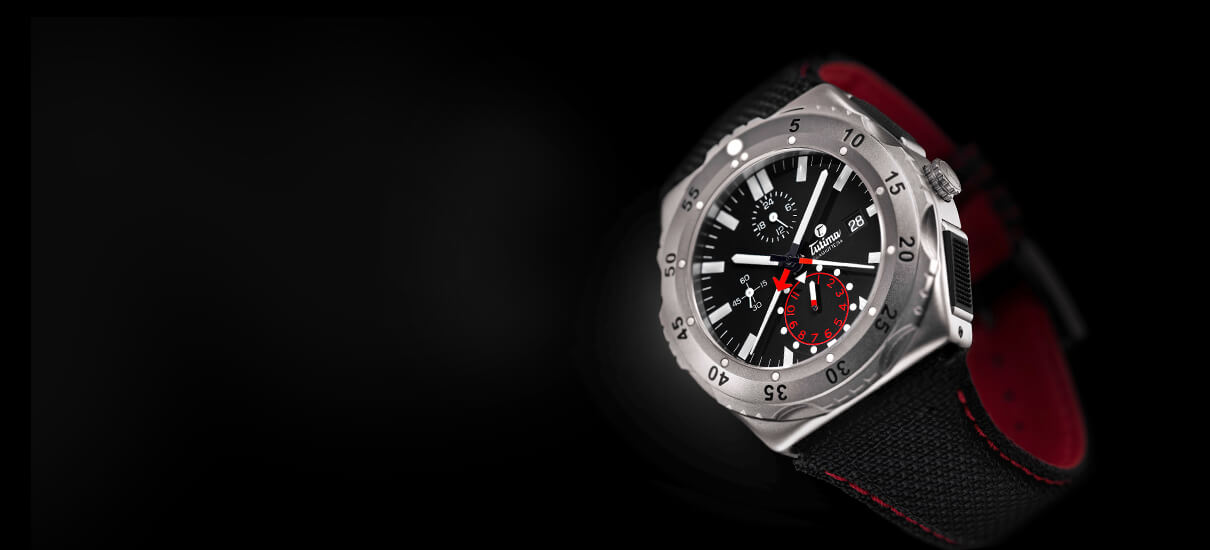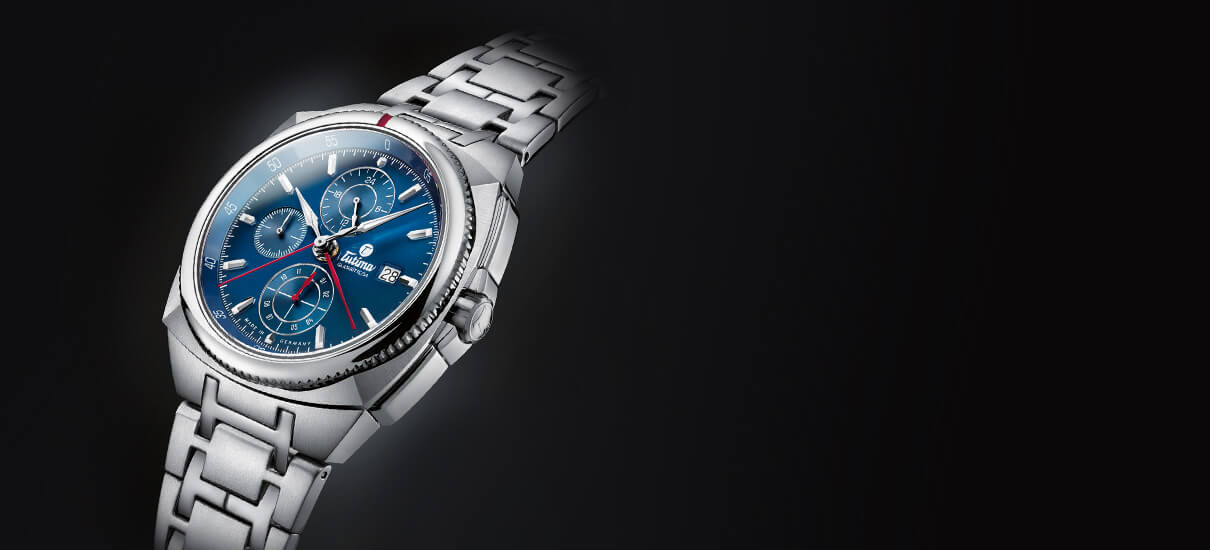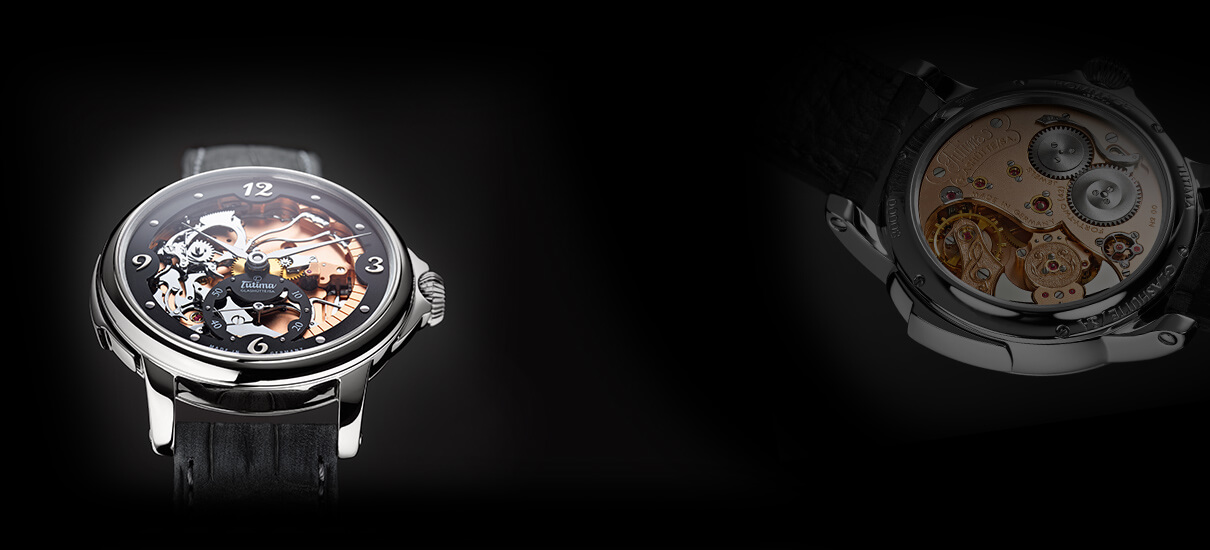Annual Calendar
This type of calendar allows for the differing lengths of regular months, automatically switching to 1 after the 30th or 31st of the previous month. Unlike a perpetual calendar, which is a much more complicated and expensive construction, the annual calendar cannot take February’s discrepancies into consideration, meaning March 1 must be manually corrected.
Antireflection
A coating usually applied by PVD to the sapphire or mineral crystal to avoid undue reflection and glare, making it easier to see the time.
Assemble
Putting together various components to form a whole: i.e., assembling a movement.
Automatic winding
A rotating weight assembly added to the movement to wind the mainspring by using the kinetic motion of the wearer’s arm.
Balance spring
Also sometimes mistranslated as the spiral spring, this small, spiral hairspring invented by Christiaan Huygens in 1675 is secured to the balance cock on one end and the balance wheel on the other. It allows frequency to be set and adjusted.
Balance wheel
Monometallic or bimetallic rim wheel oscillating in the balance, which together with the balance spring sets the rhythm for the escapement with its vibration frequency. Today’s modern balance wheels are generally made of glucydur.
Balance
Fed by energy from the mainspring, this tireless little assembly also known as the regulating organ comprising balance wheel and balance spring resembles the watch’s beating heart. It sets the rhythm for the escapement with its vibration frequency.
Beveling
The uniform filing of a component’s edges at a 45-degree angle while giving it a high polish. This is a finishing technique.
Blued screw
The traditional arts of Swiss and Glashütte watchmaking dictate that a movement should contain blued screws for aesthetic reasons. Polished steel screws are heated (technical word: tempered) to 290°C. This process relaxes the steel, turning it a deep, cornflower blue. Only a few manufactures still temper with actual heat; others prefer the chemically induced version that assures uniform color every time.
Bridge
A stable metal component used as a base for other components (like pivots) fastened through to the base plate on two sides. A bar or cock serves a similar purpose, but is only secured on one side.
C.O.S.C.
Contrôle Official Suisse de Chronomètres, the official Swiss testing institute for chronometers; only after successfully passing this or a similar establishment’s testing may a watch be called a chronometer.
Calendar Week
Used primarily in Europe, this system sees each week of the year numbered. Germany’s institute for norms (DIN) recommends that the first “calendar week” of the year be that containing at least four days of the new year, with the rest of the calendar weeks beginning every Monday. This means that every year has 52 or 53 calendar weeks; it has 53 when the year begins or ends on a Thursday.
Chronograph
This word has its roots in the Greek chronos (time) and graphein (to write) as Nicolas Rieussec’s original invention literally inscribed the elapsed time on a piece of paper with the help of a pencil attached to a type of hand. In the modern age, this term is used for watches that show not only the time of day, but also elapsed time intervals using hands started and stopped by button. While stopwatches include this function, they do not show the time of day.
Chronometer
This word literally means “measurer of time.” In the modern age, a chronometer signifies a particularly precise watch (deviation of no more than 5 seconds per day for mechanical movements). Chronometers generally come supplied with an official certificate from an independent testing office such as the C.O.S.C.
Column wheel
A component used to control chronograph functions within an integrated chronograph movement as opposed to a chronograph module attached to a base caliber movement.
Constant force
Horologists differentiate between a constant force mechanism and a constant force escapement, though people tend to use both terms interchangeably, correct or not. The mechanism mainly refers to an initial tension spring known in English by its French name remontoir, which actually means “winding mechanism.” The purpose of any constant force system is to compensate for the effect that a mainspring winding down has on the precision of a watch’s rate. An example of an inherent constant force escapement can be found in Girard-Perregaux’s Constant Escapement.
Côtes de Genève
Also known as Geneva waves or stripes, this traditional finishing element mainly applied to movement plates and large bridges consists of evenly spaced, parallel stripes. The Glashütte version, called Glashütter Streifen or Glashütte ribbing, is applied at a different angle. This is a finishing technique.
DIN
German institute for standardization (Deutsches Institut für Normung): www.din.de/en.
Equation of time
The display of the difference between mean time and solar time.
Escape wheel
Generally made of steel and typically containing 15 geared teeth, the escape wheel’s rotation is controlled by the entrance and exit pallets.
Escapement
The subassembly generally comprising escape wheel, pallets, pallet fork, lever, impulse pin, and balance staff portions the energy coming from the gear train and maintains the balance’s oscillations. In today’s wristwatches, the most common type used is the Swiss lever escapement.
Finishing
This specific watchmaking term denotes the special polishes and decorations such as perlage and côtes de Genève that are applied to make the movement aesthetic and hide traces of machining and scratches. If you want to know more about finishing, read Giulio Papi’s excellent book, High-End Horological Finishing and Decoration.
Flyback chronograph
This type of chronograph contains a special dial train switch that makes immediate reuse of the chronograph function possible without having to first stop and reset. It was developed for pilots requiring time interval measurements in quick succession.
Frequency
The number of semi-oscillations a balance makes in the time period of one hour (vph/ vibrations per hour or bph/beats per hour), which can also be expressed in hertz. Hertz (Hz), named for German physicist Heinrich Hertz, is calculated by dividing the number of oscillations by the period of time in which they are measured. For example, a watch oscillating at a frequency of 18,000 vph (9,000 full oscillations) beats at 2.5 Hz (9,000 divided by 3,600 seconds equals 2.5).
Glucydur
Alloy of copper, beryllium, and iron used to make balance wheels since the 1930s. Its stability and hardness are what has allowed the modern use of non-screw balances since they can be poised in the factory workshop.
GMT
GMT, or Greenwich Mean Time, is based on the globe being divided into 24 time zones as established in the Meridian Conference of 1884. The prime meridian runs through the Royal Observatory in the London suburb of Greenwich. In contemporary watch terminology, GMT is often used to describe a wristwatch that displays a second time zone or a 24-hour indication.
Gregorian Calendar
Put forth by Pope Gregory XIII in 1582 to replace the Julian calendar, this is the standard used today in the Western world dividing the year into 12 months of 28-31 days. Despite its irregularities, it has proven to be the nearest representative to the natural divisions of time dictated by the earth’s rotation and elliptical path.
Guilloché
Also known as engine-turning in English, this is a surface decoration usually applied to the dial. A stationary grooving tool with a sharp tip, such as a rose engine, is utilized to cut a geometric pattern. The tool is manually guided, even though it is called an “engine.” The process is quite time-consuming and requires great skill, making it very expensive to produce, which is why most dials are produced by stamping.
Index
A fairly standard subgroup fine adjustment assembly added to the balance that the watchmaker can use to regulate the balance spring by changing its length. The purpose is to adjust the rate, getting it as close to chronometric perfection as possible as opposed to “fast” or “slow.”
ISO
International organization for standardization: www.iso.org. This institute is responsible for developing and publishing international standards that ensure products and services are safe.
Jewel
The “rubies” often referred to in watchmaking are ruby jewel bearings for reducing friction. The ruby used today is actually synthetic corundum, which has no inclusions, thus making it both cost-efficient and perfect for its purpose.
LIGA
German acronym for Lithographie, Galvanoformung, Abformung (Lithography, Electroplating, and Molding) that describes a fabrication technology used to create high-aspect-ratio microstructures.
Mainspring
Located within the spring barrel, when tensioned the mainspring stores energy. As it relaxes, it passes this energy to the escapement via the gear train.
Manufacture
Modern definitions of this word are not clear-cut, but most experts agree that the term should be used for a company that manufactures at least one watch movement on premises. While at the beginning of the mechanical renaissance this constituted only a handful of companies in Switzerland and Germany, today’s competitive market has forced investment in developing proprietary movements. Though horologists prefer to use the French variation, the word derives from Latin and means “made by hand.”
Mean time
The even division of the day into 24 hours that is in general use on our clocks and watches. Also known as civil time.
Mechanical Renaissance
The period in the history of watchmaking that directly followed the quartz crisis, which nearly obliterated mechanical watchmaking in Europe. This era, beginning in the mid-1980s, can also be described as a comeback of mechanical watchmaking, propelling it into the domain of serious luxury.
Minute repeater
The minute repeater acoustically signals the hours, quarter hours, and minutes elapsed since noon or midnight. Pushing a slide on the side of the case winds a spring that sets off the hammers. Normally a repeater uses two different gongs to signal hours (low tone), quarter hours (high and low tones in succession), and minutes (high tone). Some repeaters have three gongs: this is called a carillon.
Pallets
Made of synthetic ruby, one entrance and one exit pallet are placed on the pallet fork at the end of the escapement lever. They control the escape wheel.
Pantograph
A device similar to a rose engine or straight cutter used for guilloché that is mechanically controlled, making it an automatic process rather than a manual one.
Perlage
A very common finishing technique comprising an even pattern of partially overlapping dots and applied with a quickly rotating plastic or wooden peg. Also known as circular graining, it may have had the original function of “catching” dust and dirt before it could progress further into the movement.
Perpetual Calendar
The perpetual calendar automatically takes the number of days of each month into consideration and therefore usually includes a leap year display, which helps keep track of the differing lengths of the months all the way to the next secular year (2100). At this point, a watchmaker will have to reset the perpetual calendar’s date, which will remain perfectly attuned to each month’s length – even during leap years – for another century after that.
Plate
The metal base upon which a movement is assembled. A special characteristic of the Glashütte art of watchmaking is the use of a three-quarter or two-thirds plate in contrast to the full plate generally used in Swiss watchmaking.
PVD
The short form of physical vapor deposition, a vacuum process used to deposit thin coatings onto a surface. In watchmaking, it often refers to a coating that changes the color of something or the process used to deposit an anti-reflective coating onto a crystal.
Quartz crisis
Also termed the quartz revolution, this was the historical era between about 1970 and about 1985 in which mechanical watchmaking was nearly obliterated in Europe due to the combination of unfavorable currency fluctuation and an influx of competitively priced, highly accurate quartz timepieces from Japan.
Rate
How accurately a watch is running at a given time. The daily rate describes measurements 24 hours apart. The average daily rate expresses the mean value of numerous daily rate measurements.
Remontoir
An initial tension spring known in English by its French name, which actually means “winding mechanism.” Its purpose is to provide constant force, which compensates for the effect that a mainspring winding down has on the precision of a watch’s rate by providing it with constant energy.
Ruby
The “rubies” often referred to in watchmaking are ruby jewel bearings for reducing friction. The ruby used today is actually synthetic corundum, which has no inclusions, thus making it both cost-efficient and perfect for its purpose.
Screw balance
Before glucydur and inherently weighted balance wheels, poising and regulation of the balance was done using miniscule screws screwed into the balance wheel. Today, this is no longer a necessity, and the screw balance represents more of an anachronistic quality element rather than a necessity for a well-regulated timepiece as its construction and assembly are costly.
Seal of Geneva
A hallmark established in 1886 intended to designate not only origin, but also quality. Modified over time to remain current and relevant, a movement must fulfill twelve criteria and be located in the Swiss canton of Geneva to be awarded the stamp.
Secular Year
The first year of a century that is not divisible by 400. The next secular year we will experience is 2100.
Skeletonization
The art of sculpting an existing movement to its base geometric minimum by cutting, sawing and filing away all that is superfluous. This art form is usually completed by hand and combined with engraving, but today there are two existent forms of machine-induced skeletonization: one sees the individual components cut by machine to mimic traditional hand-skeletonization, while the other sees the movement conceived as skeletonized right from conception, in which case the plates and bridges are thusly created by CNC milling.
Solar time
The division of the day according to the true astronomical situation; in fact, it is what a sundial would display. Solar time does not always precisely correspond to mean time: the discrepancies can vary from +16 to –14 minutes. Four times a year, mean and solar time coincide perfectly.
Swan-neck fine regulation
A fancier, more aesthetic fine adjustment assembly added to the balance that the watchmaker can use to regulate the balance spring by changing its length. The purpose is to adjust the rate, getting it as close to chronometric perfection as possible as opposed to “fast” or “slow.”
Tempering
Heating steel to 290°C, which turns it a deep, cornflower blue.
Tourbillon
Patented in 1801 by Abraham-Louis Breguet, the tourbillon revolves the escapement 360° around its own axis within a cage in order to compensate for the effects of gravity on its precision. While this was very clever for the pocket watch, which stood upright in one position in the vest pocket, it is rather moot in a wristwatch. Today, the tourbillon is more about showcasing the skill of a watchmaker than improving precision.


